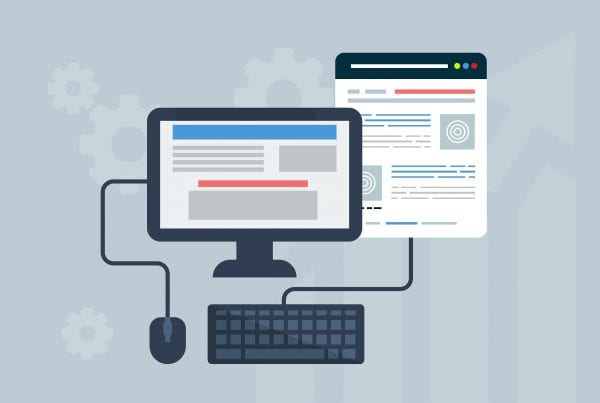
Creating a website is a balance of content, design, and technical know-how. These three aspects are inter-related and depend upon each other for a successful website that communicates to its audience and encourages repeat visitors. Every website has a purpose and is judged successful by how well it’s purpose is achieved. Planing is an essential part of website design.
This is what you need:
- Purpose
- Content
- Computer
- Internet access
- FTP program
1. State the Purpose:
Determine the purpose of the website. Consider how many visitors you want to visit your site during a specific time frame. What is it that you want the visitor to do once they come to your website? What behavior do you want from them? Ask yourself: Is the site selling a product or service? Is it providing information and/or education? Is it a means of staying in touch with family, friends, and collegues?
2. Describe your Target Audience:
Who do you want to attract to your website? Think about what group or groups of people are likely to buy, read, or communicate on your site. A tech related site will look quite different than a site for parenting, or a business to business site.
State your audience in terms of demographics: age, gender, race, ethnicity, income, interests, beliefs, family status, and education. Your target audience should be as specific as possible.
Consider how many visitors you want to visit your site during a specific time frame.
3. Who are You?:
Whether creating a site for a client or for your business or personal use, describe how you want your target audience to perceive you or your company (“you” being the website owner). How would they describe you to others? What is the single most important thing you want your audience to take away from your site? One more thing to consider is how to demonstrate your credibility… why should the viewer believe you?
4. Content:
State what you want to tell your audience. Determine the categories of information you should provide your visitors in order to have them behave ni the desired way. What tone do you want to set? Should you use everyday English, technical terminology, marketing hype, academic speech, or a combination of these?
Use a Site Map to layout your site and show which parts of the site connect to other places on the site.
6. Features:
Decide which functions your audience needs. Will they look for a search option? a forum for asking questions or sharing information? How about a shopping cart and payment options? Does your site need access to data, such as recipe files, or products for sale? How will your visitors interact with your site – including posting images and video, asking questions, and providing content. What kind of feedback and contact will your audience have with you?
Hints:
Plan ahead!!!
If you are a designer, learn some basic HTML/XHTML
If you are a “coder”, learn design basics
Analyze your competitors sites for positive and negative aspects
Use a test server before uploading to a live server for the public to work out any missing links, or revise content
Communicate with your client and design team
Remember that websites are dynamic and that the content should be refreshed and current



